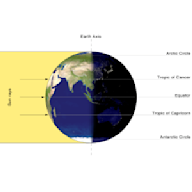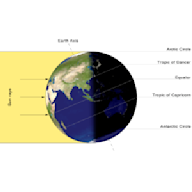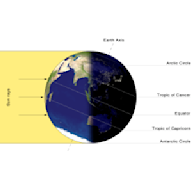Search results
Jun 25, 2024 · Learn about the autumnal equinox, when the Sun crosses the celestial equator and day and night are equal in length. Find out when it occurs in the Northern and Southern Hemispheres, and how it marks the beginning of autumn.
- Ecliptic
Ecliptic, in astronomy, the great circle that is the...
- Ecliptic
- Fall 2024 Dates
- Alternative Fall Start Dates
- Dwindling Daylight Around The Fall Equinox
- Equal Day and Night?
- Equilux
- Falling Temperatures
- Traditions and Folklore
- Fall Months
- How Long Is Fall?
- Fall Or Autumn?
- GeneratedCaptionsTabForHeroSec
According to the astronomical definition, fall begins with the autumnal equinox. In the Northern Hemisphere, it's the September equinox; south of the equator, it is the equinox in March. What is an equinox? Equinoxes and solstices in your city
Meteorologists use a different method of defining the first day of fall. And, in some countries, the beginning of the seasons is determined by average temperaturesrather than fixed dates or astronomical events. Meteorological and other seasons definitions
In most locations on Earth—except for tropical regions—the start of fall is accompanied by rapidly shortening days. At any given location, the day-to-day difference in day length is greatest around the days of the equinoxes. After the fall equinox, days still get shorter, but at an ever-decreasing rate. On the shortest day of the year, the winter s...
Astronomical fall begins on the day of the equinox. The name of the event derives from Latin and means equal night, giving the impression that both day and night are exactly 12 hours long. However, that is not entirely true. In most regions, the day of the equinox is a bit longer than 12 hours.
The date when day and night are actually equal is called the equilux. It falls a few days before the spring equinox and some days after the fall equinoxin both hemispheres. Other astronomical terms & definitions
In the temperate zone, in particular, fall is also the time when the warm, stable weather of summer gives way to colder, more erratic weatherconditions, though this varies substantially from one region to another. Climate and monthly average temperatures in your city
The start of autumn and the fall equinox are celebrated in cultures and religions around the world with various fall traditions, holidays, and festivals. Fall festivals: Mabon, Navaratri, and the Snake of Light
In the Northern Hemisphere, astronomical and meteorological autumn runs from September to December. South of the equator, it starts in March and ends in June. Read more about the history and meaningof the fall months:
The Earth does not move at a constant speed in its elliptical (oval) orbit, so the seasons are not of equal length. On average, fall lasts for 89.8 days in the Northern Hemisphere and 92.8 daysin the Southern Hemisphere. Average season lengths: 1. March equinox to June solstice: 92.8 days 2. June solstice to September equinox: 93.6 days 3. Septembe...
Both fall and autumn are correct English terms for the season preceding winter. Autumn is primarily used in British English, while fall is a term more frequently used in American English. Topics: Astronomy, Seasons, September, March, Equinox
Find out when the fall equinox or autumnal equinox is in 2024 for both hemispheres, and how it marks the start of the season. Learn about the astronomical, meteorological and cultural aspects of fall, and how it relates to the Earth's tilt and orbit.
In the northern hemisphere, the vernal equinox (March) conventionally marks the beginning of spring in most cultures and is considered the start of the New Year in the Assyrian calendar, Hindu, and the Persian or Iranian calendars, while the autumnal equinox (September) marks the beginning of autumn.
Jan 24, 2024 · Learn about the autumnal equinox, an astronomical event that marks the start of autumn in the Northern Hemisphere. Find out when it occurs, how it affects the weather, foliage, and the Harvest Moon, and more.
Aug 27, 2019 · The autumnal equinox marks the end of summer and beginning of autumn in the northern hemisphere. Learn when it occurs, how it affects the seasons and the Earth's axis, and what traditions and rituals are associated with it.
Sep 20, 2016 · Learn about the astronomical phenomenon of equinox, which marks the start of fall in the Northern Hemisphere and spring in the Southern Hemisphere. Discover how to observe Saturn, the moon, and star clusters in the night sky around the autumn equinox.





